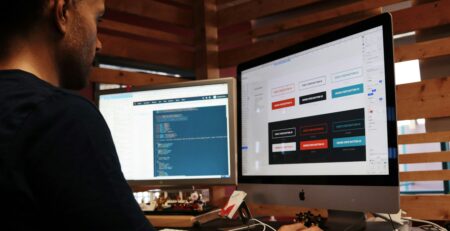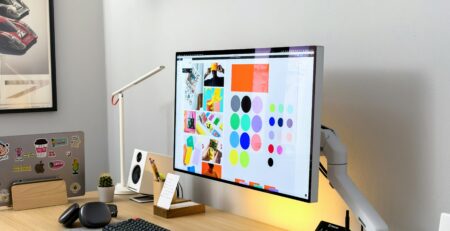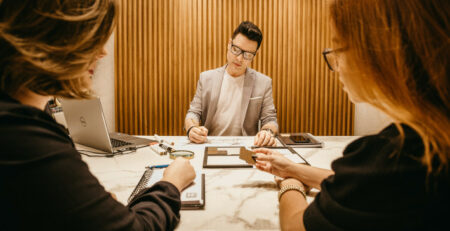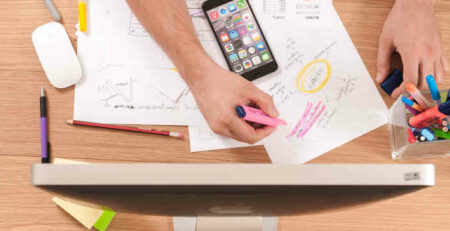15 Tips for Designers Working Remotely
Remote work is a growing trend but some designers are thrown off when they’re removed from the traditional office environment. After all, design is generally a team effort and centered on users, so what do you do when you’re physically separated from both?
There’s tons we can learn from past designers who have worked solo. Modern technology has made it even easier to connect with others and conduct research. It might not have the same feeling as a face-to-face meeting, but when used correctly it can get the job done faster than ever.
Whether you’re struggling to stay focused and motivated or considering a move to designer remote work, the designer tips in this guide should be a big help.
What’s So Different About Remote Design Work?
If you’re used to working on a small team or individually, working remotely might not feel all that different. Designers in big art departments and other team structures face more changes when all or part of them transition to remote work.
One of the first things you’ll notice when you make the leap to design remote work is a strange occurrence with management – even though they aren’t physically down the hall or anywhere nearby, you tend to see them way more often.
This is one of the main differences between designer remote work and the traditional variety. Stakeholders are going to need more frequent reassurance that the design team is doing work. The good news is that this tendency typically fades as everyone gets used to the new arrangements.
With the rest of the team either working remotely as well or at least having to communicate with remote workers via the same conferencing and chat apps, remote designers also face a huge hurdle when it comes to brainstorming.
Brainstorming for Remote Designers
Individual designers have to stay inspired to keep creating their best work and designers who are part of a team need to be able to bounce ideas off of each other and get feedback on the things they’re working on. But what’s the best way to do all of this without spending your whole working day in a long video conference?
The most common answer is found in chat services and shared documents. Designers can make posts there, tag one another, and share videos or screengrabs of their projects. These messages don’t need immediate answers which makes them perfect for chats and status documents.
One possible danger is that people will flood the channel with unrelated chatting or so many people will post in the chat that scrolling through to find people’s work and give them feedback will be next to impossible. With the right rules governing chats and a division of chats for different purposes, this problem is easily solved.

Inspiration for Remote Designers
Great, so you can stay in touch with your colleagues and you’re getting the hang of making sure management can see deliverables and maintain their confidence in you even while you work remotely. The next big trick is staying creative.
Remote designers who work from home have an especially hard time with this one. When your commute is nothing more than a walk from the living room to the bedroom, the world can start to seem pretty small and uninspiring.
Here are a few ways you can find some design inspiration when you work remotely:
- Variety & Spontaneity
Creatives tend to gravitate to city centers because there’s so much going on there that you can’t help but have unexpected run-ins and random conversations that lead to new ideas and inspiration.
When you work remotely, this might not be so easily done, especially if the decision to go remote is mandated and not electively decided. If you’re lucky enough to have an apartment or house with a balcony or terrace, there’s some slight chance that you might get some interactions with your neighbors.
But for most people, the best way to meet people if you can’t leave the house is to find them on the internet. Forums and aggregate websites like Reddit, StumbleUpon, and Quora offer tons of engagement with others and an almost infinite variety of subjects. The less directly related to design the better so you can truly switch gears.
- Remote Learning
Other websites like YouTube are filled with instructional videos and discussions of the latest design thinking. Many universities and colleges have online courses and forums where people discuss what they’re working on and the future of design work.
Podcasts are another great resource to keep learning. Again, even if they aren’t specifically geared toward designers, these programs can give you new ideas. One great podcast that discusses all sorts of great design ideas is 99% Invisible, which has episodes on the design of everything from perfume to highway signs.
- Stay Connected with Other Designers
When you find out a cool fact about design or just want to see what everyone else is working on, talking to coworkers or people in a similar field remotely is pretty simple. Tons of apps and video conferencing services exist for huge groups or individuals to talk to each other and most of them are free or nearly so.
In addition to sharing new information, talking with your colleagues and other people who will understand where you’re coming from also helps stave off the feeling of isolation that’s so common for remote workers of all kinds.
- Read & Listen to Music
If you have a way to do these two things without using the same computer you’re spending the rest of your waking hours on, so much the better. Maybe record players are hipster and dedicated mp3 players are outdated, but they do allow you to shut the screens off for a while.
While it is important to balance what you’re reading and listening to so that it doesn’t bleed into your work too much, these are also the best mediums to help you escape for a short while. Music activates a completely different part of your brain and it can be a huge mood booster while books and magazines can take you anywhere and send your thoughts in new directions.
- Go Outside
If you can, use the flexibility of your remote position to work from a cafe or a coworking space. You might get a short conversation out of it, but even if you don’t, people-watching can be stimulating on its own.
For those who don’t have space to at least hang out on their balcony or in a yard, working near a window or with the TV playing quietly in the background creates a vaguely similar feeling. Any fresh air you’re able to get will help clear your head and looking at something besides a screen will also be a relief for your mind.
15 Tips for Designers Working Remotely
Even if these ideas inspire you, that doesn’t guarantee you’ll be productive. Here are the 15 best designer tips to produce your best creative work in a remote position:
1- Designate a Workspace
Maybe you’ll occasionally work from bed on a cold morning, but setting up a dedicated place where you work can give your workday a more defined beginning and ending. If you work from the couch, you can’t flop down on the couch to signify the end of the workday.
2- Stay Organized
Once you have established a place to work, make sure everything has a place and make efforts to keep things where they go. Chaos might look good in Albert Einstein’s office, but it will only hinder your ability to work. Plus, people on the other end of a video chat aren’t going to be so impressed with a messy living space.
3- Dress for Work
This designer tip is more about work-life balance than about looking professional or impressing anyone. You’ll feel much more relaxed if you can switch into sweatpants at the end of the day. If you wear them all day every day you might start to feel a bit burnt out.
4- Set Up Shared Docs
Feeling unproductive when you work remotely is incredibly discouraging. If you at least go to an office, you can see what others are up to and know if the slow-down is company-wide.
A shared activity log can accomplish the same thing. It doesn’t have to have enough information for supervisors to gauge whether you’ve been working hard. Just write a basic description of what you’re working on and even some of the things you were thinking about and then talk about them with coworkers or other designers occasionally.
5- Show Your Work Off
Send screengrabs or short recordings in a group chat that’s dedicated to that purpose. It’s great to see what colleagues are working on and it can be very encouraging to get praise from them or hear that you’re at least heading in the right direction. This is one of those things that might feel a bit strange when you first start designer remote work, but it will quickly become an indispensable part of your schedule.
6- Set Your Hours
This is especially true if you’re in a different time zone from other team members. You have to be clear about when you’re logging off for the day or you could wind up responding to emails at midnight. It’s nothing to be rude about, but don’t leave any grey area or space for miscommunication.
7- Don’t Stop Networking
Just because you’ll likely never meet them in person doesn’t mean you can’t have meaningful interactions with other designers. Luckily, the internet has tons of online conferences and virtual gatherings for creatives. LinkedIn is also a great way to make new professional contacts.
8- Keep Having Meetings
Endless meetings are one of the most disliked things about working in a traditional office setup, but occasional ones can be very beneficial, especially when all or part of the team members are remote. Setting an agenda for the week or the month and discussing possible solutions to problems as they arise are just two reasons to have meetings.
Team cohesion and understanding are also built through meetings. The whole team should understand their position in the organization and meetings can greatly help accomplish this.
9- Build Shorter Iterations
Not only for management who might be looking for deliverables and regular intervals but also because you won’t have people in the same room to give you feedback, you should make your design prototypes and test builds quicker as a remote worker.
Sacrifice some detail to make this possible but don’t turn in unfinished work. It might sound challenging to know what you need to flesh out in your prototypes, but you get the hang of it the more you work with your team.
10- Learn Collaborative Tools
Meetings can be more illustrative and your user research can be more effective if you take the time to learn how to use collaborative tools like a shared whiteboard or screen sharing. Doing so ahead of time will make conducting research and meetings more seamless and save lots of time.
11- Use Creative Research Methods
In some ways, remote user research is more challenging than the usual methods. But it can also be more effective. For example, researching how users navigate through an app by recording how they do so with behavior analytics can give you more information about how to make the design better. You’ll also be able to see what they’re actually doing instead of just relying on what they say they do.
You can also ask people to use a product and maintain a diary for a specific amount of time. Some people might be unfamiliar with writing in such a way, but with enough time they’ll get the hang of it and you’ll get more honest feedback.
Online surveys also make it easier than ever to get information from a large number of people. We all spend so much time on our phones and computers these days you can probably get results back faster than expected if your survey format makes it easy to fill out quickly.
12- Seek Out and Share Good Design
Team-building exercises like a virtual happy hour will be much more interesting if there’s a common topic to discuss. What could be more natural for designers to discuss than design and designer tips?
This works for meetings and just general chatting as well. Even if the physical office building is gone, you can still give your virtual workspaces a similar feeling by having open discussions. It will boost brainstorming while keeping everything professional.
13- Structure Your Work Day
If you’re a morning person, schedule the bulk of your meetings, and difficult work in the morning. Easier tasks like emptying your email inbox can take up a shorter amount of time later in the afternoon. For people who take a longer time to wake up fully, the opposite structure can be used. Having a structured schedule can help make sure you accomplish all of your tasks each day.
14- Communicate More
Since designer remote work requires sharing ideas and brainstorming to be more intentional, you’re going to have to do it more often. There’s a fine line between blowing up coworkers’ chats and sharing legitimate information and discussing it, though.
You might be sharing examples of your work, designer tips or design thinking you found interesting, or just inquiring what everyone has on their plate at the moment, but reaching out and responding to others a bit more often will bring a remote team together better.
15- Take Breaks
Something about the freedom of remote working makes us forget to take a breather now and then. You must monitor your own workload and prevent burnout because other people won’t be able to monitor it. Supervisors and managers know to look out for such things, but designer remote work makes it difficult to see when burnout is beginning to set in.

Conclusion:
Remote work is a big leap for some designers but it also presents a great opportunity to be more purposeful in your communication and get even better feedback and research on your designs. As long as you set clear boundaries and explore enough to keep the creative juices flowing, working remotely as a designer is a great opportunity.
Hopefully, the designer tips in this guide will help remote designers stay focused, inspired, and team-oriented so they can produce their best design work no matter where they are.












